Selangor’s forest reserves will be 11ha smaller should the new proposed “northern alignment” of the East Coast Rail Link (ECRL) go ahead.
Environmentalists are cautiously optimistic and commended the use of a long tunnel to avoid the need to clear more forests.
They also noted measures in the project’s environmental impact assessment (EIA) report to mitigate the potential impact on wildlife and sources of drinking water.
Should the proposed alignment proceed, the experts called for assurance that these measures would be implemented during the actual construction.
It remains to be seen whether this “northern alignment” would be approved as the Selangor government is against it and is in favour of the “southern alignment”.
Mitigating forest loss
This portion of the ECRL - dubbed C2 - will travel through three permanent forest reserves.
The alignment begins in Gombak and runs through Serendah, Puncak Alam and Kapar before terminating at Port Klang.
Between Gombak and Serendah, the 14km-long Serendah Tunnel will travel under two permanent forest reserves - Ulu Gombak and Serendah.
Between Serendah and Puncak Alam, the track will cut across a third permanent forest reserve - Rantau Panjang. This portion includes ground-level tracks.
In total, construction is expected to result in an 11.5ha forest loss - 10.6ha in the Rantau Panjang reserve and 0.9ha in Ulu Gombak. This is the size of 16 football fields.

To mitigate the effects, the EIA report said wildlife will be “assisted” to retreat to surrounding areas as land clearing is done in phases.
Existing roads will be used during construction to reduce the need to cut more trees for new access roads.
To prevent wildlife from colliding with the track or coming into conflict with local communities, fences and walls will be installed along the track.
The report said enforcement agencies will be roped in for wildlife public awareness programmes and to monitor areas where wildlife is often seen.
To mitigate illegal poaching activities in the affected protected forests - where the critically endangered Sunda Pangolin and endangered Malayan Tapir are found - it will install barriers and monitoring mechanisms along access roads.
Meanwhile, constructing the Serendah Tunnel is expected to generate some 11 million tonnes of waste - mainly granite rocks.
The EIA report said these rocks will be repurposed in the ECRL project for road pavements, embankments and landscaping.
For construction waste that could not be reused, it said this will be disposed of at approved landfills.
Mitigating river pollution
Another concern is that the ECRL will result in polluting the sources of drinking water that serve the densely populated Klang Valley.
Selangor residents already face frequent water cuts due to river pollution.
The proposed C2 track will make 20 river crossings across three water catchments - Sungai Klang, Sungai Selangor and Sungai Buloh.
These rivers flow into six water intake points - Wangsa Maju, Batu Dam, Rantau Panjang, SSP1, SSP2 and SSP3.
To mitigate possible spills involving fuel, oil or lubricants, the report said Emergency Response Plan and contingency plans will be in place.
“Spill kits” - comprising essential items needed to stop oil or chemical spills - will also be provided.
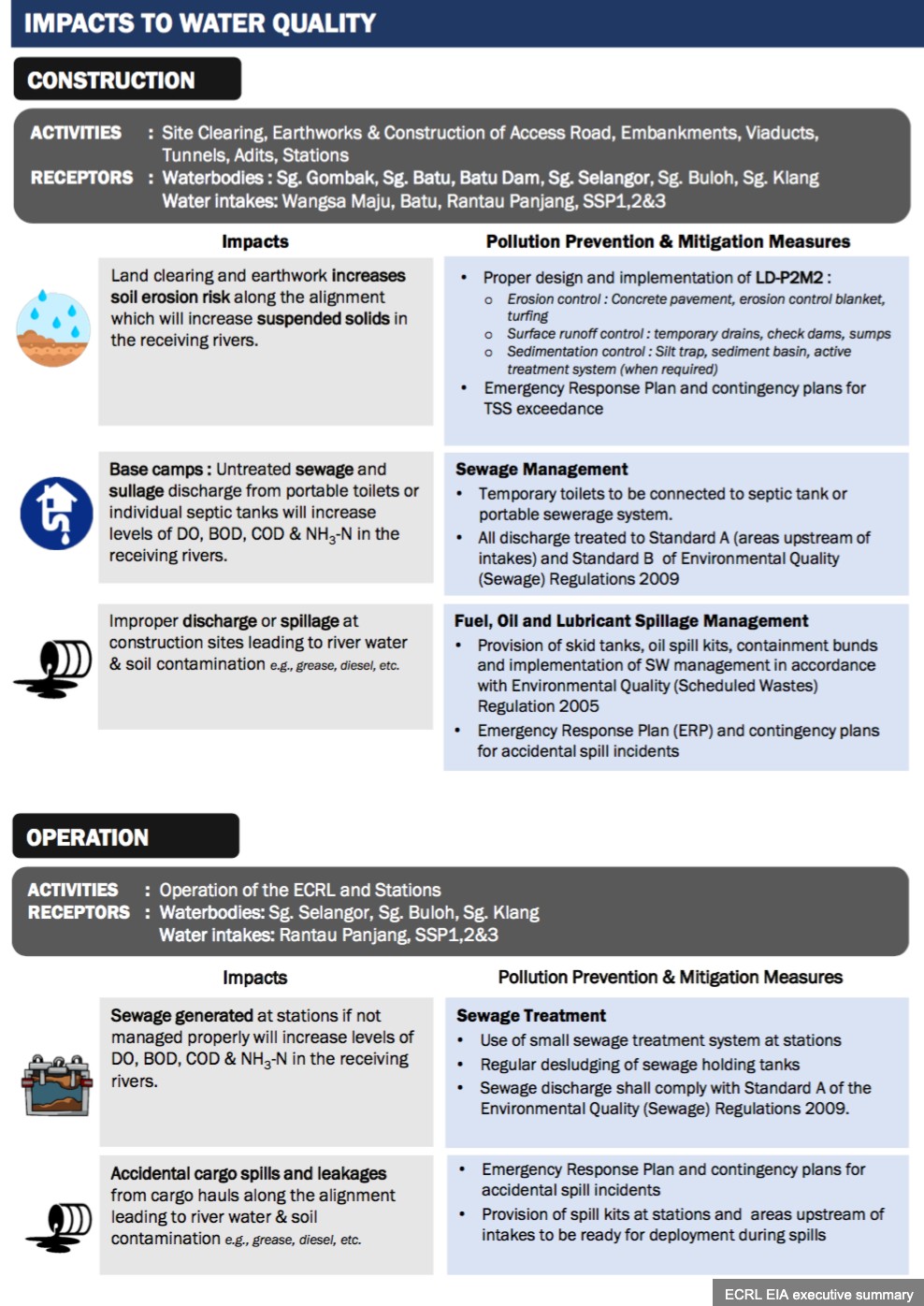
To mitigate pollution caused by untreated sewage, the EIA report said temporary toilets at construction sites will be installed with septic tanks and portable sewage systems.
Sewage systems at eventual ECRL stations will be regularly de-sludged - a process of removing scum and sludge from septic tanks.
Soil erosion during land clearing and tunnel construction was another potential issue. This could increase the level of total suspended solids (TSS) in rivers.
TSS refers to the amount of floating matter in water. The more suspended solids are detected, the more contaminated the water body is.
In Malaysia, TSS levels are classified from Class I (least amount of solids) to Class V (most amount of solids).
For example, digging the Serendah Tunnel may result in soil erosion affecting Sungai Gapis and Sungai Gombak, which flows into the Wangsa Maju water intake point.
The tunnel will also be constructed under Sungai Batu, which flows into the Batu Dam.
Based on the EIA report, two shallow tunnels (called adits) will surface at both sides of the Sungai Batu river bank to discharge treated wastewater generated from constructing the ECRL tunnel.
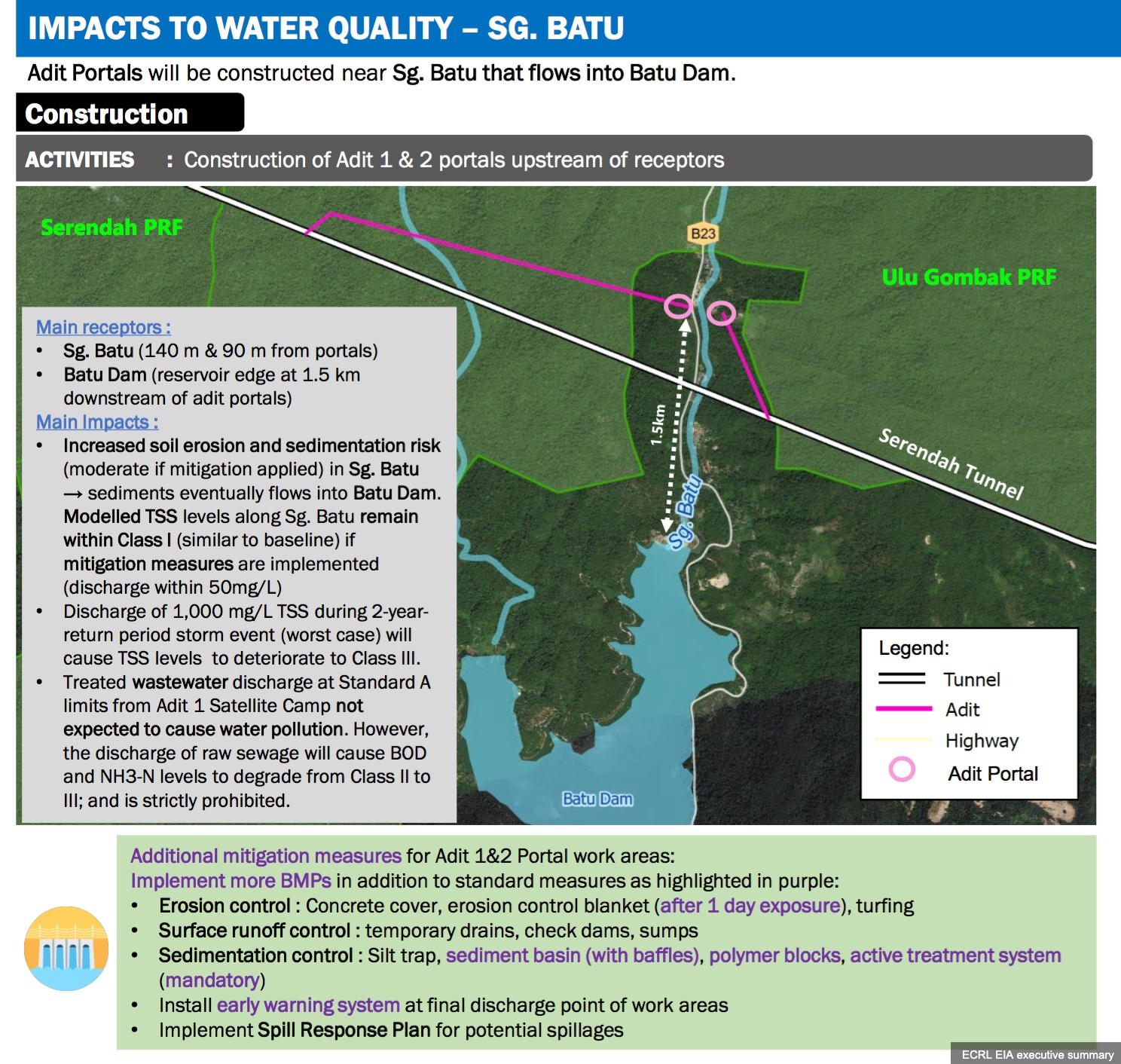
Furthermore, elevated portions of the track crossing Sungai Garing and Sungai Kundang are at least 11km upstream of Sungai Selangor - the main water source.
To mitigate these risks, the EIA report said mechanisms such as erosion control blankets would be constructed inside the tunnel.
Active treatment systems and early warning systems would also be installed before any soil or sedimentation is discharged into rivers.
With these measures in place, the report expects the level of TSS at Batu Dam to remain within Class I (up to 25mg/l) after the construction.
However, it warned that a worst-case scenario involving storms “will cause TSS levels to deteriorate to Class III (up to 150mg/l)”.
Put plan into action
Commenting on the EIA report, Global Environment Centre (GEC) director Faizal Parish Abdullah said the mitigation measures appear well-planned and comprehensive.
“However, as we see from many other projects, the plan may be adequate but there are problems with the implementation,” he said in a comment to Malaysiakini.
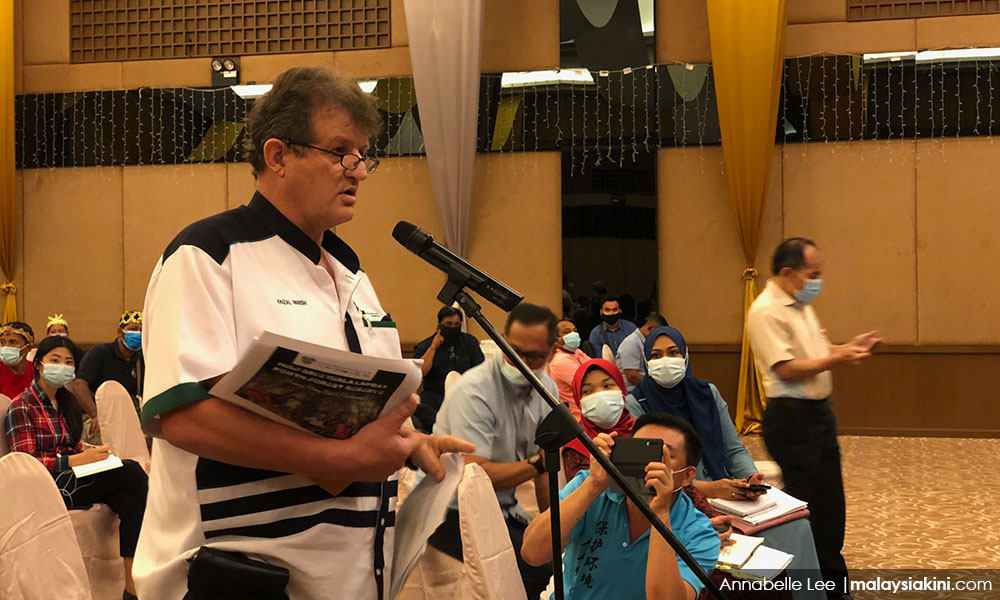
Faizal is concerned that Batu Dam could be contaminated in the event of extreme rainfall.
“That (dam) is a risk area with the excavated fill removed at the adit portals, but they do state that additional mitigation measures were added.
“But (the report also) highlights the risk from extreme rainfall could lead to contamination of the reservoir,” he noted.
The former National Water Service Commission (SPAN) commissioner was also concerned about the potential impact on Sungai Selangor, one of the main sources of water supply for the Klang Valley.
“It will be critical during construction to avoid any spillage of oil and chemicals. I see the river crossings are elevated but nearby sections are on the ground with erosion risk.
“However, the main problem that could affect downstream intakes is likely to be chemicals like oil spills.
“Sediment will have less impact and (this) can be treated in a plant,” Faizal analysed.
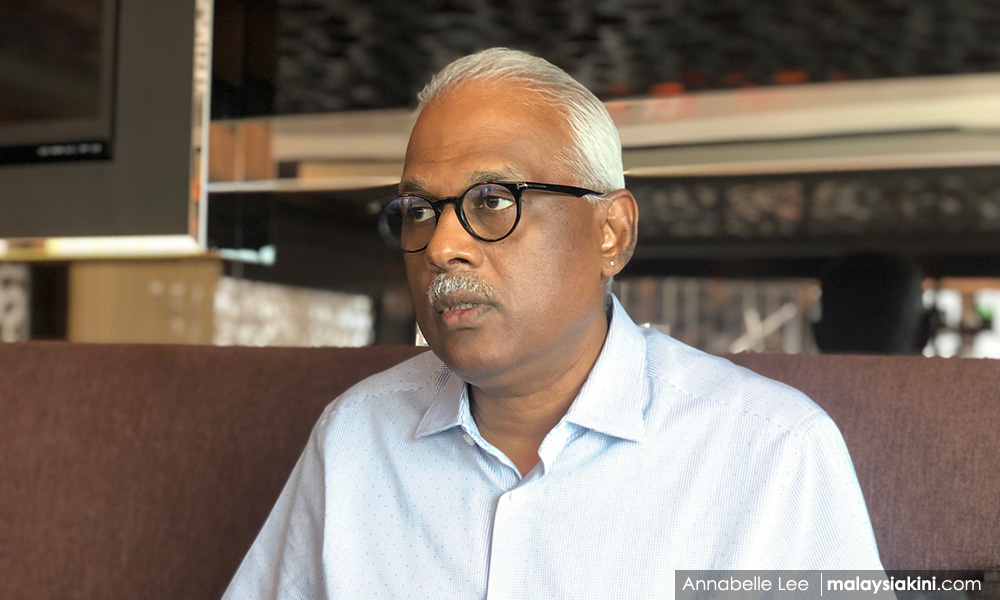
Former SPAN chairperson Charles Santiago similarly advised caution during construction as the proposed ECRL track was near many sources of drinking water.
Speaking to Malaysiakini, the opposition MP for Klang said oil and chemical spills must be avoided.
“Have to ensure that there is no spillage of oil, petrol, or cutting of soil that might flow into Sungai Gombak, Rantau Panjang, Wangsa Maju et cetera.
“So it might be helpful that more details and attention goes to the Emergency Response Plan.
“Also, there could be spillage or accidents during construction. Frequency of monitoring has to be clearly established,” Charles said.
Both Faizal and Charles commented that the Serendah Tunnel would reduce the impact on wildlife and their habitats in the Ulu Gombak and Serendah permanent forest reserves.
The co-founder of conservation group Justice for Wildlife, Nor Arlina Amirah Ahmad Ghani, noted that risks to wildlife, especially endangered species, remained.
“Opening up this area via access will encourage poachers and increase the risk of human-wildlife conflict.
“We already have so many tapirs dead on the road - we do not want tapirs dead on the (ECRL) railway track too,” Arlina said in a comment to Malaysiakini.
Aside from human-wildlife conflict, Arlina also underscored the possible transmission of diseases from animals to humans.
“A more understated risk is the spillover of zoonotic diseases over the human population due to the close proximity of wildlife to humans,” she said.
Between Serendah and Puncak Alam, the proposed alignment comes within 150m of M Residences - an existing housing area in Rawang.
The C2 portion of the ECRL is up for public inspection from now until Nov 23.
Public inspection documents can be accessed online, via the MRL website, or in person at the Agensi Pengangkutan Awam Darat (Apad) office in Kuala Lumpur.
For in-person inspections, appointments must be made via email at feedback@mrl.com.my.
Responses for or against the C2 portion can be filed online here. - Mkini




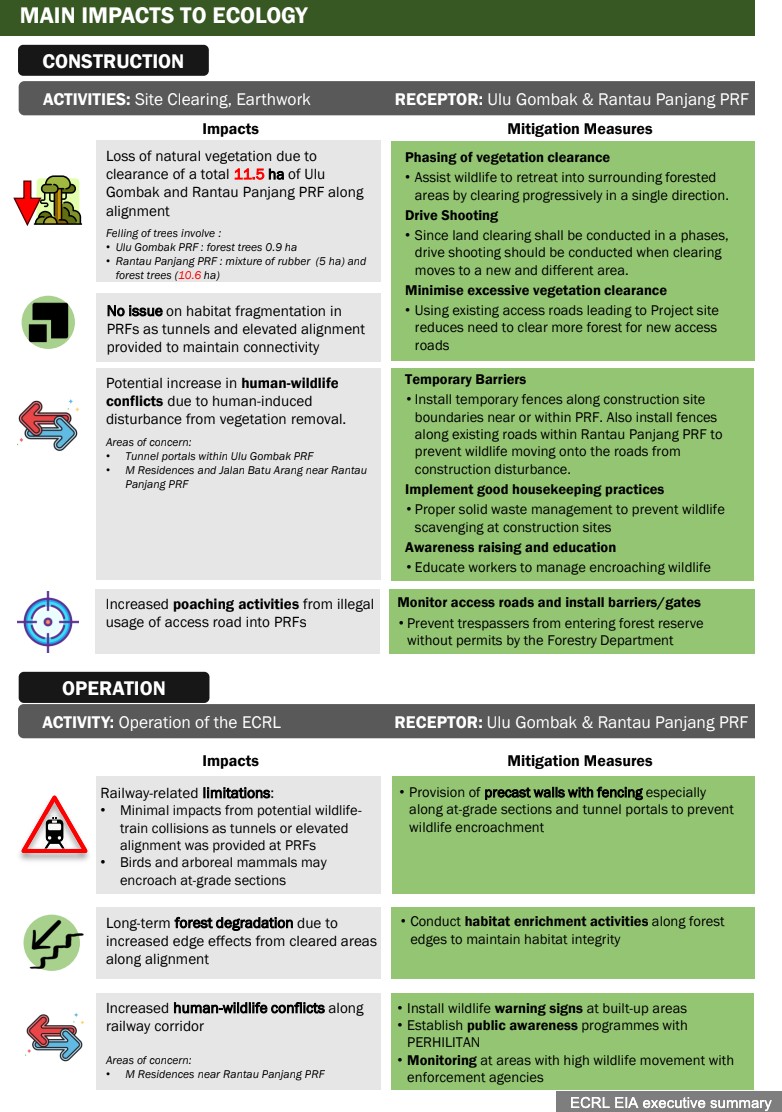
No comments:
Post a Comment
Note: Only a member of this blog may post a comment.